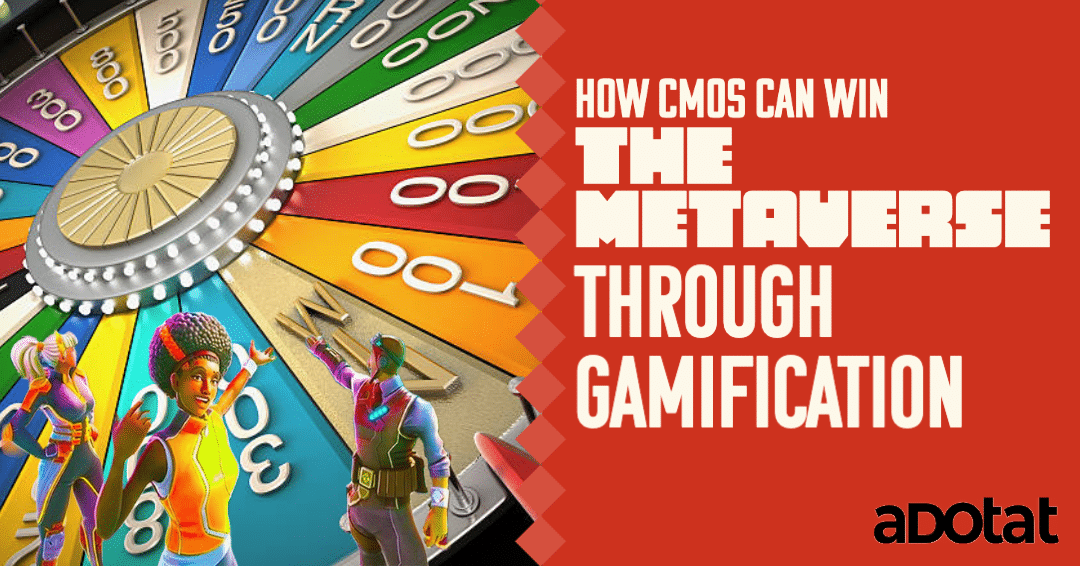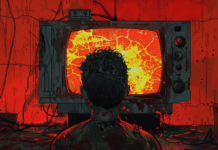Over the past few years, gamification has become a buzzword in the advertising industry. Gamification is the process of applying game design elements and mechanics to non-gaming contexts to encourage user engagement. Due to its effectiveness at engaging users, companies have started adopting this approach with other products and services including healthcare, education and financial services.
One of the simplest forms of gamification is getting a stamp every time you buy a coffee. Collect ten stamps and you get a free drink. It’s like completing a level and getting a reward.
Adopting a gamification strategy hooks consumers and ignites their competitive spirit via game-like features. When it comes to the Metaverse, brands can build a riveting environment that induces stronger consumer engagement tactics and vice versa. Even if the metaverse isn’t anywhere that it needs to be, brainstorming these ideas will help you long term.
Likewise, augmented reality creates more lifelike gamification campaigns via adding augmented reality fuels the power of eventually adding significance to the customer experiences. If it is done properly, all of this can transform a conventional marketing campaign into a game-winning customer engagement experience.
The purpose of this is to make you think outside the box, to consider what the future will be and to share the information with your team.
So let’s examine what the Gamification Flywheel is, how it works, and how we can apply it to the metaverse with specific examples.
First, what is the purpose of the Gamification flywheel in the Metaverse? The gamification flywheel is a tool to help you build a community of players (in this case, consumers also) who are engaged and motivated to perform your game’s core tasks. It pushes the motivation for engaged players to higher levels, which then drives more engagement. )
The key point is that motivation comes before action—in fact it motivates action! Every game designer knows this intuitively; when you’re working on an RPG, what determines how many monsters are spawned? The answer is not how much time has passed or how many turns have been taken by your best player—it’s what level you’ve set the difficulty slider at.
Gamification is successful because it capitalizes on people’s innate desire to compete and win.
There are 3 basic elements that drive motivation.
Autonomy. When you feel like you are in charge, you gain motivation and tend to stick to your goals.
Value. If you think that a goal is important to achieve, you are more likely to complete it.
Competence. As you get better at doing something, you are more likely to continue doing it.
So what are some parts that CMO’s should focus on and learn about today?
Discovery is the first part of the Gamification flywheel for the purpose of the Metaverse. Your experience towards a product or service starts when you first hear about it, hence the Discovery Phase. The first phase of a player’s journey start when the player first discovers and learns about your product or service. This can be done through a current application for AR or a partial metaverse like what Meta is doing — and then promote the game.
Then you have to get the user involved with the game, through a process of onboarding — which many folks in the advertising industry are familiar with.Most companies focus on getting new customers because they believe that a user’s first experience with the product is key to winning over lifelong users.
Users do not want to be bogged down with lengthy instructions when they first use a product; instead, they would like to see quick tips that let them get up and running quickly. Make it easy to use, so that almost anyone can figure it out within less than a minute. People want to get started right away, and they love the satisfaction of feeling smart.
Progress is one of the key components of gamification. Progress can be measured in many way. The progress players make can be shared with others, such as friends and family who want to see their progression, or it can be visualized so that players are able to see how far they’ve come in comparison to others. This is often done through points, a progress bar, perhaps collection of items for a grant prize, and so on. Often this is time-pressure, where you reduce the amount of time people have to do things can focus them on finding the solution.
When you’re thinking about the flywheel and getting people to take action, pressure is an important part.
Pressure can be a good thing or bad, depending on what you use it for and how someone feels about their experience with the pressure. When it comes down to it, being able to use pressure effectively means knowing how much pressure is needed at any given time—and that’s where gamification comes in handy! Countdown timers, streaks, and collectibles that are only available for a limited time exert pressure on players to act quickly.
The Play Phase is the most crucial part of the Gamification Flywheel. In this phase, you get players to engage with your game as quickly as possible.
This is where you create an environment that inspires play and allows players to explore it freely, in a way that feels natural and rewarding. If you can get people playing in this phase, they’ll keep coming back for more—and not only that: they’ll also be excited to share their experiences with others!
Dedication Action Rewards
The most difficult part of creating an addictive game is to create rewards that are compelling enough for players, but not so powerful that they make the game too easy
As a marketer, you can think about these as being similar to achievements in video games. They are something that you give out for doing something cool or unique in your game world, but they don’t affect gameplay directly (so far). The key is to make the rewards feel meaningful and special, but not so powerful that they make it impossible for people to play without them. If you can get people playing in this phase, they’ll keep coming back for more—and not only that: they’ll also be excited to share their experiences with others!
You have some choices here:
In-game prizes – You can give out virtual prizes like badges or special items as rewards for certain actions in your metaverse (like accomplishing a quest). You could also give out physical prizes like gift cards or coupons if you’re making an online version of your metaverse. If you have partners who run brick-and-mortar stores, then you could even have real-world versions of these types of things
Online prizes – If your metaverse is just digital (or mostly digital), then it might make sense for everything else to be digital too! This might mean offering virtual gift cards so players can spend money on things like clothes and accessories for their avatars (instead of taking money away from other businesses). It could also mean giving discount codes which allow users access certain services within your platform at a reduced price on certain days/times only — this way everyone wins because no one loses any revenue while still keeping customers happy!”
In World Contests
Contests. A metaverse contest is a great way to get people involved in your brand, and they’re also a great way to promote a new product or service. They can create an incentive for engagement, which leads to more users engaging with the platform and ultimately becoming more loyal customers. .
For example, you could create a contests for who can get the most friends online at the same time in a certain area, and then give them special prizes or in-game merch.
Require Trivia about the Brand that is learned by exploring the brand’s area of the metaverse
Try to make the trivia fun and easy to learn. It’s not a test of knowledge, but rather an exploration of the brand’s area of the metaverse. The questions should be short and simple enough that a user can answer them quickly, allowing them to continue exploring the area for more rewards.
The trivia shouldn’t require too much prior knowledge about either AR or VR itself; it should be focused on what makes your brand unique—and therefore interesting—for users who are new to these technologies.
For example, you can tell users about 20 virtual billboards with information about your brand—such as its history, different products and fun facts. This will create greater affinity for your brand than just advertising.
A similar approach would be to create a “choose your own adventure” experience where consumers influence the branded story by their actions—perhaps something like what Netflix does with its interactive TV shows such as Black Mirror.
There could be immersive experiences for example taking people to historic times and locations, or to the setting of your brand. Imagine Chevrolet having a “time-machine” that takes them into the past to see classic cards (and drive them!)
Also, if you sell olive oil and want to create branded content for your customer base, virtual reality can take customers on a tour of the fields in Italy where their olives are grown. It’s all about great graphics-driven imagery —imagine what could be done via VR!
Do a “golden ticket” for virtual events.
Many of us will remember reading the classic children’s novel Charlie and the Chocolate Factory, in which eccentric candy maker Willy Wonka randomly selects five lucky children to visit his surrealistic factory.
In the marketing world, Special “Golden Tickets” can be distributed to lucky recipients, who then had a chance to win big prizes. Many good brands cleverly rely on this classic formula in order build excitement around their events.
Golden Tickets can be places all over virtual reality and augmented reality, and just require people to “look” for them. Maybe the golden ticket is an actual ticket found in a product that requires using an augmented reality app like Snap to see it, or there is a code that makes it “virtual” for them to use in the metaverse.
Fashion Shows that allow virtual reality avatars to try on new brands and get exclusive prizes based on votes of other virtual denizens.
You’re probably familiar with the concept of a fashion show. It’s a stage where models walk, and the audience watches their clothes. In the Metaverse, we can take that concept one step further by allowing virtual reality avatars to try on new brands and get exclusive prizes based on votes from other virtual denizens.
Both the competitive nature and the participation of everyone in the environment makes fashion shows, especially with prizes, very useful in making consumers feel part of the entire process. Maybe even give them the change to “design” a version of it, and get it in real life?
This would expand upon the idea of gamifying fashion shows, which companies like American Eagle Outfitters have already started doing by adding voting mechanisms into their VR platforms that allow users to vote for their favorite outfits.
Do an Augmented Reality Game that requires people to go to product displays around the area and “collect” different clues to solve a crime.
To build on the success of your AR game, you could create a more complex version that has players collecting clues and completing tasks by visiting specific product displays around the area
This would drive traffic to those locations, and it would reward players for engaging with your brand in this way. By making it so that people have to physically go to different locations to complete their missions, you’re forcing them outside of their comfort zones and into new areas where they might see other products or information about your product line.
Perhaps most importantly, this kind of gamification makes it easier for people who aren’t already familiar with augmented reality technology to get involved as well!
By incorporating gamification into your marketing, you can see increased engagement with your brand in the metaverse.
Gamification is an effective way to get people to engage with your brand. It’s a way of getting them to do things that they wouldn’t normally do, like opening up a new Facebook account or signing up for an email list.
You can use gamification in many ways, depending on what you want to achieve. If your goal is to encourage engagement between your users and the metaverse itself, then think about how you could incorporate elements of gameplay into their user experience (for example by giving them achievements).
Conclusion
In the end, it’s not only about what happens in one person’s head. It’s about how that person interacts with others and the world around them. Gamification can help facilitate this process, giving people an incentive to keep coming back while building their own identity within the game. As VR becomes more commonplace, we expect that more companies will start implementing these techniques in their marketing strategies—and hopefully you now have some inspiration for how your brand could do just that!










